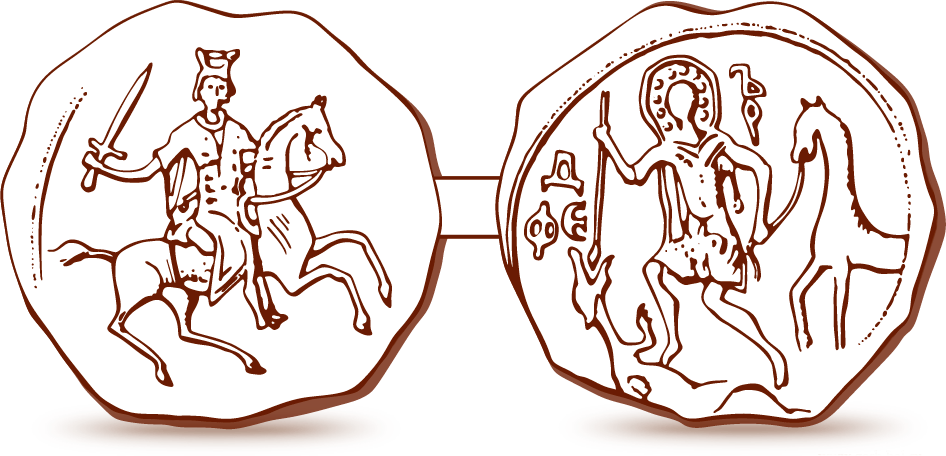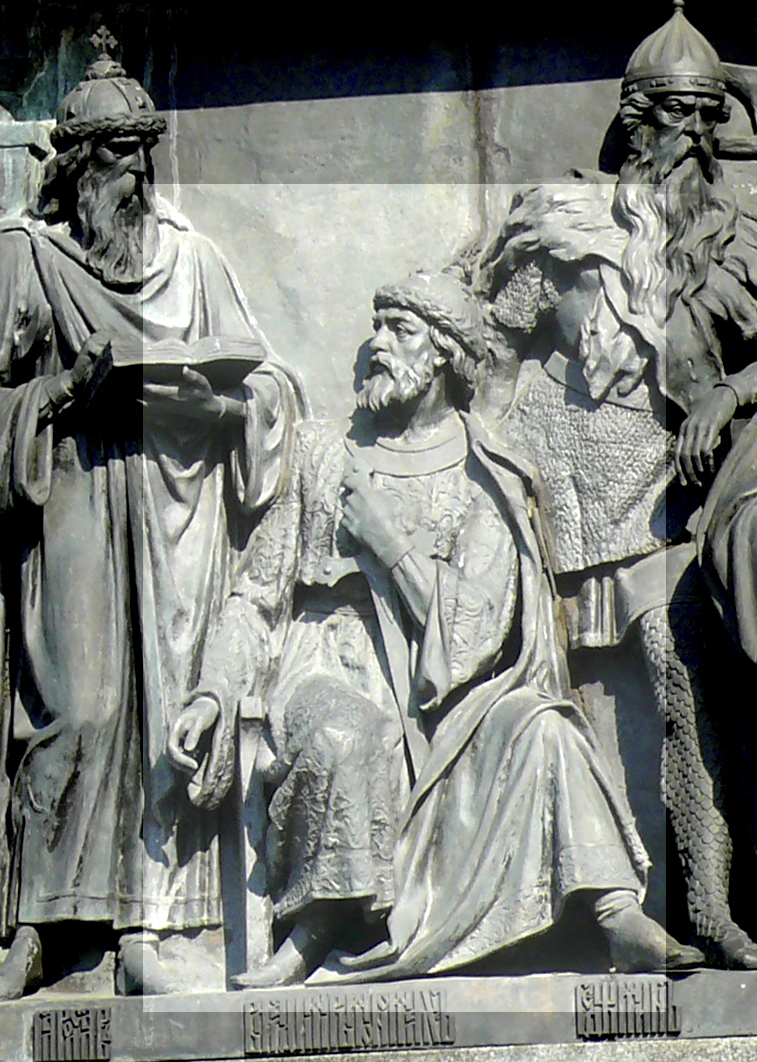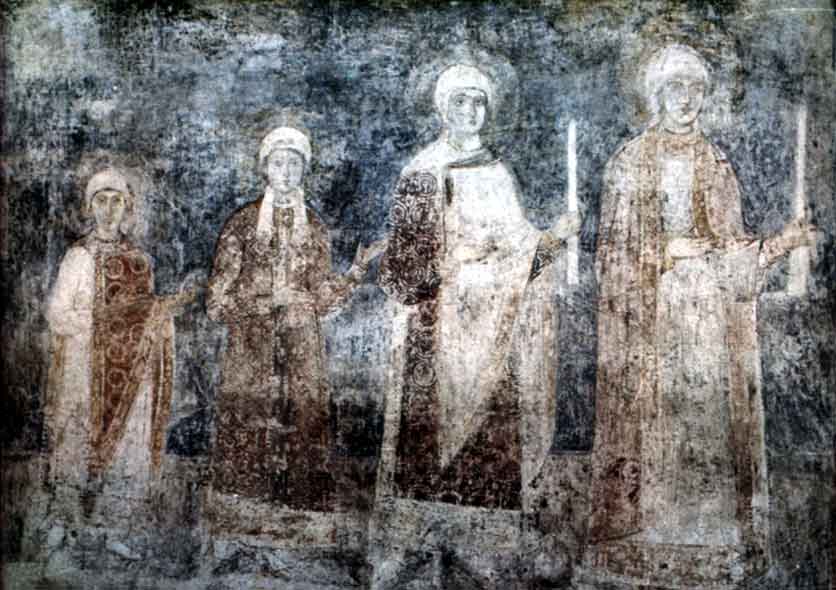|
Vladimirian Rus'
The Principality of Suzdal, from 1157 the Grand Principality of Vladimir, commonly known as Vladimir-Suzdal, or simply Suzdalia, was a medieval principality that was established during the disintegration of Kievan Rus'. In historiography, the territory of the grand principality and the principalities that emerged from it is commonly denoted as northeast Russia or northeast Rus. Yury Dolgoruky () moved his capital from Rostov to Suzdal in 1125, following the death of his father. He ruled a principality that had become virtually independent. His son Andrey () moved the capital to Vladimir and had Kiev sacked in 1169, leading to political power shifting to the north-east. Andrey's younger brother Vsevolod III () secured control of the throne, and following his death, a dynastic conflict ensued. Yury II () was killed during the Mongol invasions of 1237–1238. His younger brother Yaroslav II () and the other princes submitted to Mongol rule. By the end of the 13th cent ... [...More Info...] [...Related Items...] OR: [Wikipedia] [Google] [Baidu] |
Alexander Nevsky
Alexander Yaroslavich Nevsky (; ; monastic name: ''Aleksiy''; 13 May 1221 – 14 November 1263) was Prince of Novgorod (1236–1240; 1241–1256; 1258–1259), Grand Prince of Kiev (1249–1263), and Grand Prince of Vladimir (1252–1263). Commonly regarded as a key figure in medieval Russian history, Alexander was a grandson of Vsevolod the Big Nest and rose to legendary status on account of his military victories in northwestern Russia over Swedish invaders in the 1240 Battle of the Neva, as well as German crusaders in the 1242 Battle on the Ice. He preserved Eastern Orthodoxy, agreeing to pay tribute to the powerful Golden Horde. Metropolitan Macarius of Moscow canonized Alexander Nevsky as a saint of the Russian Orthodox Church in 1547. Early life Born in Pereslavl-Zalessky around the year 1220, Alexander was the second son of Prince Yaroslav Vsevolodovich. His mother was , daughter of Mstislav Mstislavich The Bold. From the ''Tales of the Life and Courage of the ... [...More Info...] [...Related Items...] OR: [Wikipedia] [Google] [Baidu] |
Yuri II Of Vladimir
Yuri II (, also transcribed as ''Iuri''), also known as George II of Vladimir or as Georgy II Vsevolodovich (26 November 11884 March 1238), was the fourth Grand Prince of Vladimir (1212–1216, 1218–1238) who presided over the Principality of Vladimir-Suzdal at the time of the Mongol invasion of Kievan Rus'. He was the seventh child and the third and best-loved son of Vsevolod III (Vsevolod the Big Nest) and of Maria Shvarnovna. He first distinguished himself in the battles against Ryazan in 1208. His father wanted Yuri to inherit Rostov and his elder brother Konstantin to succeed him in Vladimir. The latter, however, declared that he would rule both towns or nothing at all. Thereupon Vsevolod disinherited Konstantin and passed the throne to Yuri, who received the largest portion of his possessions. Before his death, grand prince Vsevolod divided his territories between his sons; as soon as he died in 1212, the Vladimir-Suzdal war of succession (1212– ... [...More Info...] [...Related Items...] OR: [Wikipedia] [Google] [Baidu] |
Vsevolod I Of Kiev
Vsevolod I Yaroslavich (; – 13 April 1093) was Grand Prince of Kiev from 1078 until his death in 1093. Early life He was the fifth and favourite son of Yaroslav I the Wise by Ingigerd Olafsdottir. He was born around 1030. On his seal from his last years, he was named "Andrei Vsevolodu" in Greek, implying that his baptismal name was Andrew. To back up an armistice signed with the Byzantine Emperor Constantine IX Monomachos in 1046, his father married Vsevolod to a Byzantine princess, who according to tradition was named Anastasia or Maria. That the couple's son Vladimir Monomakh bore the family name of the Byzantine emperor suggests she was a member of his close family, but no contemporary evidence attests to a specific relationship and accounts of the Emperor give him no such daughter. Upon his father's death in 1054, he received in appanage the towns of Pereyaslav, Rostov, Suzdal, and the township of Beloozero which would remain in possession of his descendants ... [...More Info...] [...Related Items...] OR: [Wikipedia] [Google] [Baidu] |
Vladimir The Great
Vladimir I Sviatoslavich or Volodymyr I Sviatoslavych (; Christian name: ''Basil''; 15 July 1015), given the epithet "the Great", was Prince of Novgorod from 970 and Grand Prince of Kiev from 978 until his death in 1015. The Eastern Orthodox Church canonization, canonised him as Saint Vladimir. Vladimir's father was Sviatoslav I of the Rurik dynasty. After the death of his father in 972, Vladimir, who was then the prince of Veliky Novgorod, Novgorod, was forced to flee abroad after his brother Yaropolk I of Kiev, Yaropolk murdered his other brother Oleg of Drelinia, Oleg in 977 to become the sole ruler of Rus'. Vladimir assembled a Varangian army and returned to depose Yaropolk in 978. By 980, Vladimir had consolidated his realm to the Baltic Sea and solidified the frontiers against incursions of Bulgarians, Baltic tribes and Eastern nomads. Originally a follower of Slavic paganism, Vladimir converted to Christianity in 988, and Christianization of Kievan Rus', Christianized ... [...More Info...] [...Related Items...] OR: [Wikipedia] [Google] [Baidu] |
Yaroslav The Wise
Yaroslav I Vladimirovich ( 978 – 20 February 1054), better known as Yaroslav the Wise, was Grand Prince of Kiev from 1019 until his death in 1054. He was also earlier Prince of Novgorod from 1010 to 1034 and Prince of Rostov from 987 to 1010, uniting the principalities for a time. Yaroslav's baptismal name was George after Saint George. Yaroslav was a son of Vladimir the Great and Rogneda of Polotsk. Yaroslav ruled the northern lands around Rostov before being transferred to Novgorod in 1010. He had a strained relationship with his father and refused to pay tribute to Kiev in 1014. Following Vladimir's death in 1015, Yaroslav waged a complicated war for the Kievan throne against his half-brother Sviatopolk, ultimately emerging victorious in 1019. As the Grand Prince of Kiev, Yaroslav focused on foreign policy, forming alliances with Scandinavian countries and weakening Byzantine Empire, Byzantine influence on Kiev. He successfully captured the area around present-day Tartu ... [...More Info...] [...Related Items...] OR: [Wikipedia] [Google] [Baidu] |
Primary Chronicle
The ''Primary Chronicle'', shortened from the common ''Russian Primary Chronicle'' (, commonly transcribed ''Povest' vremennykh let'' (PVL), ), is a Rus' chronicle, chronicle of Kievan Rus' from about 850 to 1110. It is believed to have been originally compiled in or near Kiev in the 1110s. Tradition ascribed its compilation to the monk Nestor the Chronicler, Nestor (''Nestor's Chronicle'') beginning in the 12th century, but this is no longer believed to have been the case. The title of the work, ("Tale of Bygone Years") comes from the opening sentence of the Laurentian Codex, ''Laurentian'' text: "These are the narratives of bygone years regarding the origin of the land of Rus', the first princes of Kiev, and from what source the land of Rus' had its beginning". The work is considered a fundamental source for the earliest history of the East Slavs. The content of the chronicle is known today from the several surviving versions and codices, revised over the years, slightly var ... [...More Info...] [...Related Items...] OR: [Wikipedia] [Google] [Baidu] |
Principality Of Nizhny Novgorod-Suzdal
The Principality of Nizhny Novgorod-Suzdal (), also known as Suzdal-Nizhny Novgorod (also spelt ''Nizhnii''), was a principality formed in 1341. Its main towns were Nizhny Novgorod, Suzdal, Gorokhovets, Gorodets, and Kurmysh. Nizhny Novgorod was the seat of the principality from 1350. The prince Dmitry of Suzdal obtained the yarlik (patent) for the title of Grand Prince of Vladimir from khan Nawruz Beg in 1360. History merged the principalities of Suzdal and Nizhny Novgorod in 1341 with the approval of Jani Beg, who became Khan of the Golden Horde next year. In 1341, after the death of Ivan Kalita, Khan Uzbek divided the main territories of northeastern Rus'. Part of the land, which included Nizhny Novgorod, Gorodets and Unzha, became the property of Prince Konstantin of Suzdal. An independent Nizhny Novgorod-Suzdal Principality was formed, which occupied a vast territory. In the east, its border ran along the Sura River, in the southeast and south - along the rivers Py ... [...More Info...] [...Related Items...] OR: [Wikipedia] [Google] [Baidu] |
Grand Prince Of Vladimir
The Prince of Vladimir, from 1186 Grand Prince of Vladimir (), also translated as Grand Duke of Vladimir, was the title of the monarch of Vladimir-Suzdal. The title was passed to the prince of Moscow in 1389. Overview The monarch of Vladimir-Suzdal's title, ''veliky knyaz'' or ''velikii kniaz'' (, ) is variously translated into English as "Grand duke#Russian grand dukes, grand duke" or "Grand prince#Kievan Rus' and successor states, grand prince". Consequently, Vladimir-Suzdal has been interchangeably described as a "grand principality" or "grand duchy". Linguist Alan Timberlake (2000) found that the first time the phrase ''velikȳi knęz'' shows up in the ''Suzdalian Chronicle'' (in the ''Laurentian Codex, Laurentian'', ''Radziwiłł Chronicle, Radziwiłł'' and ''LPS'' manuscripts) is under the year 1186, where it is applied to Vsevolod the Big Nest, Vsevolod Yurievich. In his early reign from 1177 to 1186, he is simply referred to as "prince Vsevolod" (''knęz (zhe) Vsevolod'' ... [...More Info...] [...Related Items...] OR: [Wikipedia] [Google] [Baidu] |
Prince Of Moscow
The Grand Prince of Moscow (), known as the Prince of Moscow until 1389, was the ruler of the Grand Principality of Moscow. The Moscow principality was initially established in the 13th century as an appanage within the Vladimir-Suzdal grand principality. By the late 14th century, the grand principality became a family possession of the princes of Moscow; the monarch bore the title of ''grand prince of Vladimir and Moscow'' and later the title of ''grand prince of Vladimir, Moscow and all Russia''. History The grand principality of Vladimir-Suzdal fell apart into feuding appanages over the course of the 13th century. The princes of Moscow were descendants of Daniel. As Daniel never became grand prince of Vladimir before he died in 1303, this meant that according to traditional succession practices, his descendants were ''izgoi'': his son and successor Yury of Moscow had no legitimate claim to the throne of Vladimir. This is why Tokhta Khan granted Mikhail of Tver the grand princ ... [...More Info...] [...Related Items...] OR: [Wikipedia] [Google] [Baidu] |
Principality Of Tver
The Principality of Tver () was a Russian principality which existed between the 13th and the 15th centuries with its capital in Tver. The principality was located approximately in the area currently occupied by Tver Oblast and the eastern part of Smolensk Oblast. It was one of the states established after the fall of Kievan Rus'. Originally part of the Pereyaslavl-Zalessky principality, Tver became an independent principality when Yaroslav of Tver, Yaroslav Yaroslavich was given the western slice of his father's patrimony. During the 14th century, Tver rivaled the Principality of Moscow with the aim to become the center of the unified Russian state. Eventually it lost, decayed, and in 1485, it was annexed by Moscow. History Origins In the 1230s or the 1240s, Yaroslav II of Vladimir, Yaroslav Vsevolodovich, the grand prince of Vladimir, detached the city of Tver from the Pereyaslavl-Zalessky principality (where it previously belonged), and gave it to his son Alexander Nevsky, A ... [...More Info...] [...Related Items...] OR: [Wikipedia] [Google] [Baidu] |
Principality Of Moscow
A principality (or sometimes princedom) is a type of monarchical state or feudal territory ruled by a prince or princess. It can be either a sovereign state or a constituent part of a larger political entity. The term "principality" is often used to describe small monarchies, particularly those in Europe, where the ruler holds the title of prince or an equivalent. Historically, principalities emerged during the Middle Ages as part of the feudal system, where local princes gained significant power within a king's domain. This led to political fragmentation and the creation of mini-states. Over time, many of these principalities consolidated into larger kingdoms and empires, while others retained their independence and prospered. Sovereign principalities which exist today include Liechtenstein, Monaco, and the co-principality of Andorra. Additionally, some royal primogenitures, such as Asturias in Spain, are styled as principalities. The term is also used generically for smal ... [...More Info...] [...Related Items...] OR: [Wikipedia] [Google] [Baidu] |
Appanage
An appanage, or apanage (; ), is the grant of an estate, title, office or other thing of value to a younger child of a monarch, who would otherwise have no inheritance under the system of primogeniture (where only the eldest inherits). It was common in much of Europe. The system of appanage greatly influenced the territorial construction of France and the German states and explains why many of the former provinces of France had coats of arms which were modified versions of the king's arms. Etymology Late Latin , from or 'to give bread' (), a for food and other necessities, hence for a "subsistence" income, notably in kind, as from assigned land. Original appanage: in France History of the French appanage An appanage was a concession of a fief by the sovereign to his younger sons, while the eldest son became king on the death of his father. Appanages were considered as part of the inheritance transmitted to the (younger sons). The word was specifically used for the r ... [...More Info...] [...Related Items...] OR: [Wikipedia] [Google] [Baidu] |






